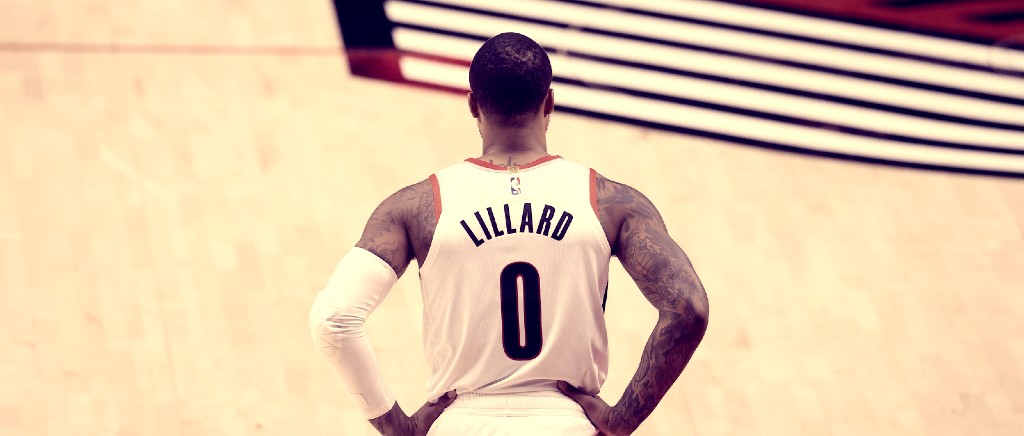The Portland Trail Blazers shouldn’t be the Western Conference’s 4-seed more than a third of the way into the season, not with C.J. McCollum having missed 15 games and Jusuf Nurkic missing 16. And yet, here we are rapidly approaching the midseason break, and the Blazers sit at 18-10 and in position to snag a homecourt first round series.
There are a number of people that deserve credit for their current position. Enes Kanter has done yeoman’s work as the starting center in Nurkic’s (and Zach Collins’) absence. Gary Trent Jr. has further established himself as one of the NBA’s elite shooters. Carmelo Anthony continues to be a steady presence on the wing, picking some very opportune times to turn back the clock and catch fire. Anfernee Simons, thrust into a larger role than expected since the McCollum injury, has taken a leap as a shooter. Robert Covington hasn’t been an offensive force but does all the things to help hold this Blazers team together on defense.
However, as has been the case for years, the sun around which the Blazers revolve is Damian Lillard, and despite a rash of injuries and a roster few would point to as one capable of a top-4 finish in the West, here they stand because Lillard simply won’t let them fail. The All-NBA point guard is averaging 29.8 points, 7.7 assists, and 4.4 rebounds per game on a 45.1/38.4/93.3 shooting split, which is eerily similar to his season averages from a year ago. As was the case in the Bubble, when he willed this team to the 8-seed in the West, Lillard is carrying the Blazers during their active 6-game winning streak and his stats in the clutch (5-point game inside 5 minutes to play) this season are, truly, preposterous.
Lillard in the clutch (5-point games in the last 5 minutes) this season:
⌚️ 82 PTS (1st)
⌚️ 63.2 FG% (1st, min 15 att)
⌚️ 58.8 3P% (1st, min 15 att)
⌚️ 100 FT%
⌚️ 12-3 record (1st)DAME. TIME. pic.twitter.com/0qaQWdN45S
— StatMuse (@statmuse) February 18, 2021
The 12-3 record in games that qualify for clutch time is the most impressive part about what Lillard is doing for the Blazers. Dame Time has been his calling card for a long time, but he’s never been as effective, efficient, or impactful on winning than he has this season for a team that needs every bit of what he’s giving them. His heroics in the fourth quarter have been nothing short of spectacular, but they’ve been thrust into the spotlight in particular after back-to-back-to-back wins this week that required his best in the closing minutes.
The BEST of DAME TIME from the last 3 games!
⌚️ 30 & 10 for @Dame_Lillard in each
⌚️ CLUTCH play after CLUTCH play
⌚️ All @trailblazers Ws (6 straight overall) pic.twitter.com/X3kpYWEkGu— NBA (@NBA) February 18, 2021
It’s the variety in Lillard’s game at this point that makes him a nightmare in these situations. His abilities to shoot from anywhere inside the halfcourt line get the most talk, and deservedly so. He and Stephen Curry have made the logo shot not just acceptable but a good shot, stretching defenses well beyond the three-point line. When teams do pick him up way up the floor, like Lonzo Ball did in New Orleans on Wednesday, it opens up a tremendous amount of room for Lillard to drive to the paint, and by coming up for a screen, whether used or rejected as he did on Wednesday, the Blazers take opposing centers out of the play by making them come out and defend a pick-and-roll 30-plus feet from the hoop.
DOES ANYONE HAVE THE TIME pic.twitter.com/6HdDUx4q6b
— Portland Trail Blazers (@trailblazers) February 18, 2021
When he does use the screen, it puts opposing big men in a no-win situation, as they have to choose to either give up their leverage at the rim by stepping out to contest a possible three, or sink back and give him space to rise-and-fire.
D A M E pic.twitter.com/Va6kmgAtCD
— Portland Trail Blazers (@trailblazers) February 18, 2021
So, the answer is to trap him, right? Teams aren’t sending two at Lillard as often as they probably should, but the Blazers have also developed some clever counters to dissuade opponents from trying to trap him. Look at this possession in New Orleans, where they have Kanter set a screen 40-feet from the basket on the right side of the floor, which gives Lillard tons of room on the left side to get around the big man before he reaches the sideline and a trap can come from Ball as he chases back. Dame is able to turn the corner and eventually draws the attention of four Pelicans, which makes for an easy find of a cutting Derrick Jones Jr. under the basket for a wide open layup.
Dame attacks the defense, finds DJJ open under the basket for the lead. #RipCity
Stream: https://t.co/Qw6YqQ11wx pic.twitter.com/h6UDx5DZbx— NBC Sports Northwest (@NBCSNorthwest) February 18, 2021
Lillard’s recent run has thrust him into the crowded MVP conversation, one headlined by LeBron James, Joel Embiid, and Nikola Jokic, but that has plenty more worthy of consideration depending on who you ask. The MVP conversation is always a tricky one, as every voter (and non-voter) has a different set of criteria for what goes into their personal selection, but what Lillard is doing for this Blazers team is worthy of every bit of praise he’s receiving in the moment.
Portland will likely come back to Earth a bit in the near future, as it’s hard to imagine this current run of play being sustainable. The nightly Houdini act, with Lillard pulling off increasingly difficult escapes from late game peril, tends to eventually lead to some losses. However, what Portland’s doing isn’t self-inflicted, like, say, the Lakers doing the same this year because they can’t bring themselves to care about the first three quarters most nights. This is out of necessity from a thin roster, and every game they win feels almost like two, because it buys them a bit more time for their other stars to get back for a playoff push.
No one would have faulted Portland for slipping back into the muddied pack of teams in the play-in race out West while down their second and third best players, with the hope that once McCollum and Nurkic were back they could make a late push for seeding and once again win their way into the playoffs. Instead, they’ve surged ahead to move 2.5 games ahead of the Warriors in that 7-seed, where a play-in fate awaits. Lillard has been quick to give credit to his teammates after wins, whether it be Covington for his defense, Kanter for his rebounding, or Anthony, Trent Jr., and Simons for hitting big shots when called upon.
But behind that guise of humility is the NBA’s preeminent late-game assassin. He knows the importance of keeping his teammates pumped up in case he has to call on them, but so long as there’s a sliver of space, the number 0 is the only one getting dialed up.







